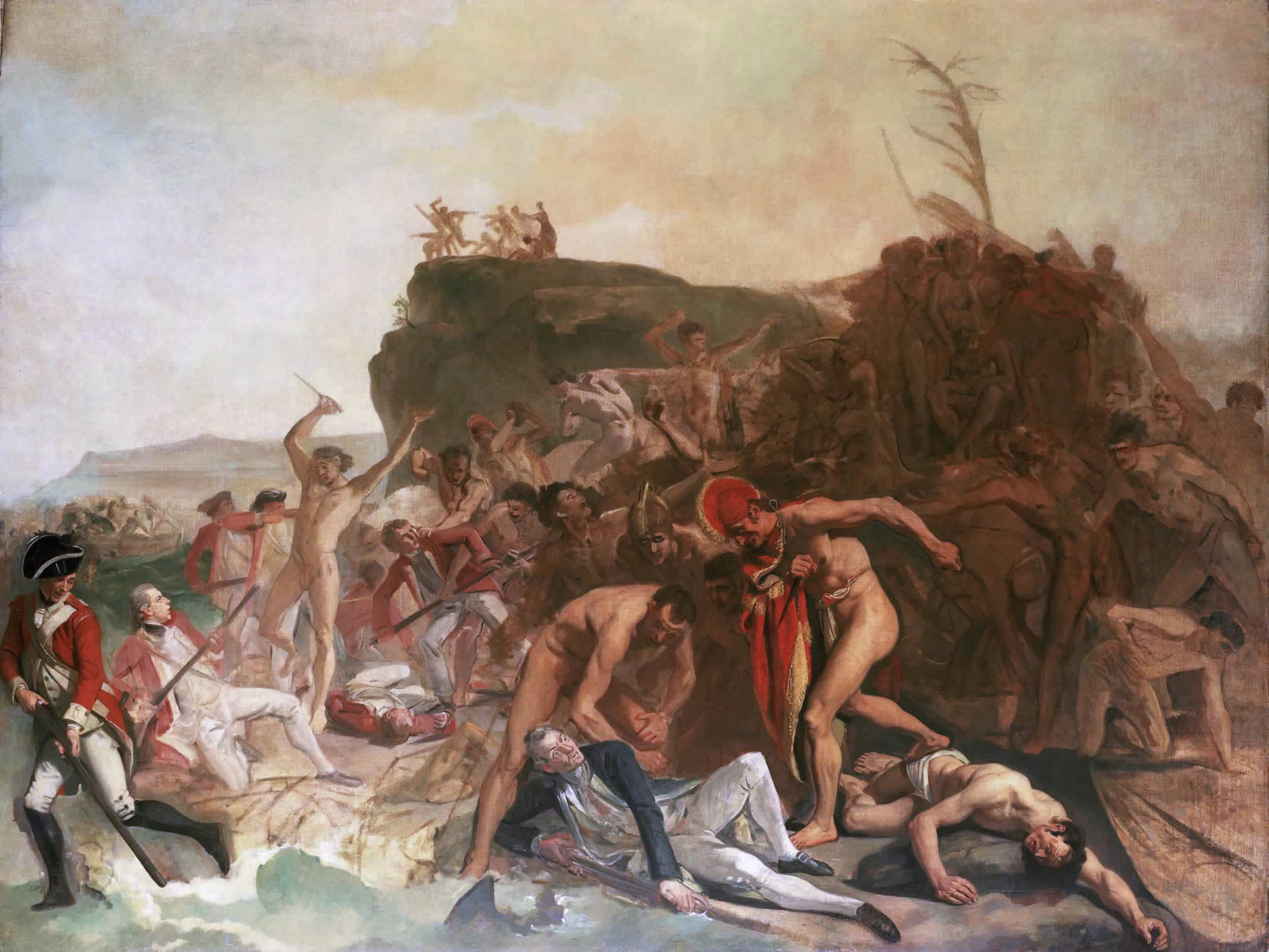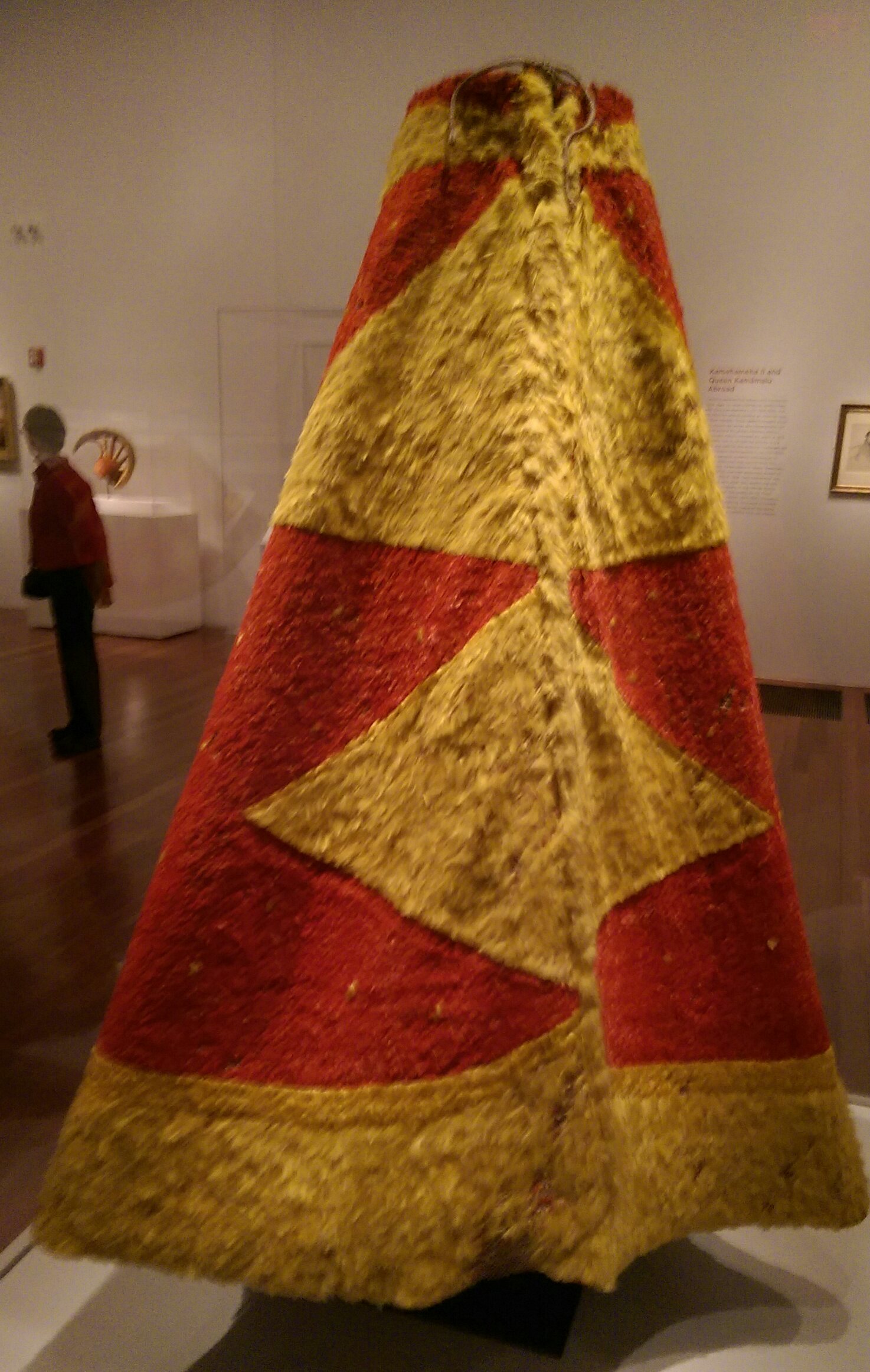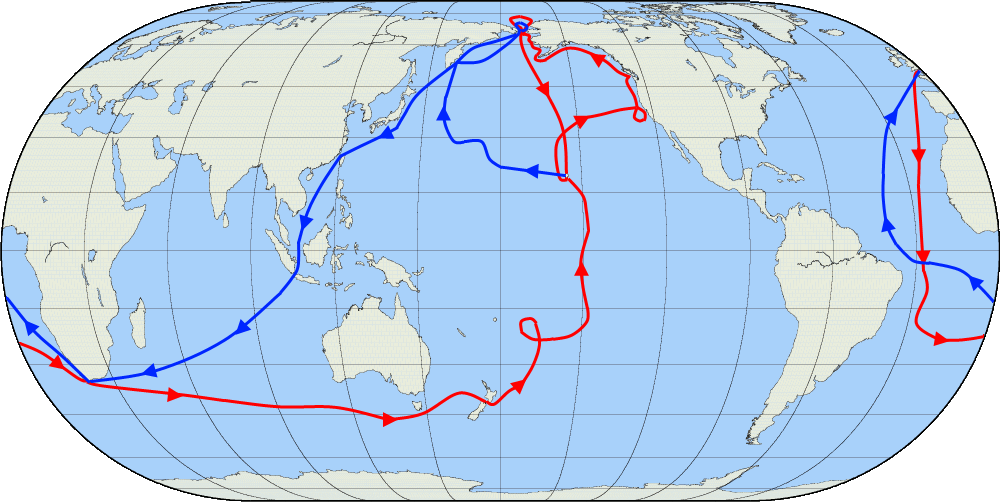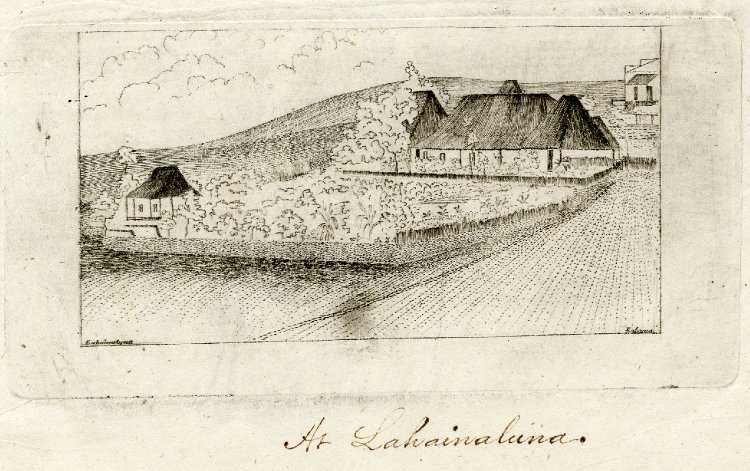|
Kānekapōlei
Kānekapōlei was a Native Hawaiian '' aliʻi wahine'' (queen) and wife of Kalaniʻōpuʻu, ''aliʻi nui'' (king/supreme ruler) of the Island of Hawaii and aunt of Kamehameha I, who were all present at Captain James Cook's death. She called attention to the kidnapping of her husband by Cook and his men, attracting his royal attendants to the beach, answering her calls for help. Birth and ancestry Kānekapōlei's father was Kauakahiakua and her mother, ʻUmiaemoku. Kauakahiakua was from the Maui royal family, a grandson of ''mōʻī'' (king), Lonohonuakini through his son Lonomakaihonua and brother of Kaʻulahea II, and Kahāpoʻohiwi. Kauakahiakua had several wives including his full blood sister Kāneikapōleikauila (w). Sibling relationships were sacred and produced the highest ranking ''niaupiʻo'' births. Kauakahiakua and Kāneikapōleikauila had a piʻo son named Kapuaahiwalani (k). Her mother, ʻUmiaemoku, was one of three sisters that included Ikuaana and Umiulaikaahumanu, K ... [...More Info...] [...Related Items...] OR: [Wikipedia] [Google] [Baidu] |
Kamehameha I
Kamehameha I (; Kalani Paiea Wohi o Kaleikini Kealiikui Kamehameha o Iolani i Kaiwikapu kaui Ka Liholiho Kūnuiākea; – May 8 or 14, 1819), also known as Kamehameha the Great, was the conqueror and first ruler of the Kingdom of Hawaii. The state of Hawaii gave a statue of him to the National Statuary Hall Collection in Washington, D.C. as one of two statues it is entitled to install there. Birth and childhood Paternity and family history Kamehameha (known as Paiea at birth), was born to Kekuʻiapoiwa II, the niece of Alapainui, the usurping ruler of Hawaii Island who had killed the two legitimate heirs of Keaweʻīkekahialiʻiokamoku during civil war. By most accounts he was born in Ainakea, Kohala, Hawaii. His father was Keōua Kalanikupuapa'ikalaninui; however, Native Hawaiian historian Samuel Kamakau says that Maui monarch Kahekili II had ''hānai'' adopted (traditional, informal adoption) Kamehameha at birth, as was the custom of the time. Kamakau believes this i ... [...More Info...] [...Related Items...] OR: [Wikipedia] [Google] [Baidu] |
Kalaniʻōpuʻu
Kalaniōpuu-a-Kaiamamao (c. 1729 – April 1782) was the aliʻi nui (supreme monarch) of the island of Hawaiʻi. He was called ''Terreeoboo, King of Owhyhee'' by James Cook and other Europeans. His name has also been written as Kaleiopuu. Biography Kalaniʻōpuʻu was the son of Kalaninuiamamao (k) and his wife Kamākaʻimoku (w), a high ranking aliʻi wahine (female of hereditary nobility) who was also the mother of Keōua (k) with another husband named Kalanikeʻeaumoku (k). This made her the grandmother of Kamehameha I. During his reign, Alapainui had kept the two young princes, Kalaniʻōpuʻu and Keōua, close to him out of either kindness or politics. Kalaniōpuu-a-Kaiamamao was the king of the island during the times Captain James Cook came to Hawaiʻi and went aboard his ship on November 26, 1778. After Cook anchored at Kealakekua Bay in January 1779, Kalaniōpuu-a-Kaiamamao paid a ceremonial visit on January 26, 1779 and exchanged gifts including a ʻahuʻula (fea ... [...More Info...] [...Related Items...] OR: [Wikipedia] [Google] [Baidu] |
Keōua Kūʻahuʻula
Keōua Kūahuula was an '' Alii'' (member of the royal class) during the time of the unification of the Kingdom of Hawaii. Family His name means "rain cloud of the red cloak". His father was Kalaniʻōpuʻu, the king at the time of the arrival of Captain James Cook. His mother was Kānekapōlei, one of the later wives of Kalaniōpuu, and mother of Pauli Kaʻōleiokū, the grandfather of Bernice Pauahi Bishop and Ruth Keelikolani. This meant his older half-brother Kīwalaʻō was in line to inherit the kingdom. Later life He was not happy, however, to receive no lands after his father died in 1781. He challenged his cousin Kamehameha I, resulting in the Battle of Moku'ohai. He escaped the battle to relatives in the Kaū district to the South in 1782. Although Kamehameha controlled the West side of the island, repeated raids never resulted in a clear victory for either side. In 1790, after escaping another attack, his party was caught in an eruption of Kilauea, and lost ... [...More Info...] [...Related Items...] OR: [Wikipedia] [Google] [Baidu] |
Keʻelikōlani
Ruth Ke‘elikōlani, or sometimes written as Luka Ke‘elikōlani, also known as Ruth Ke‘elikōlani Keanolani Kanāhoahoa or Ruth Keanolani Kanāhoahoa Ke‘elikōlani (June 17, 1826 – May 24, 1883), was a formal member of the House of Kamehameha (founding dynasty of the Hawaiian Kingdom), Governor of the Island of Hawaiʻi and for a period, the largest and wealthiest landowner in the Hawaiian islands. Keʻelikōlani's genealogy is controversial. Her mother's identity has never been in question but her grandfather Pauli Kaōleiokū's relationship to Kamehameha I is heavily disputed. While her father has been legally identified as early as 1864, disputes to that lineage continued as late as 1919. As one of the primary heirs to the Kamehameha family, Ruth became landholder of much of what would become the Bernice Pauahi Bishop Estate, funding the Kamehameha Schools. Her name Keʻelikōlani means ''leaf bud of heaven''. Birth, family and early life Keʻelikōlani's mother wa ... [...More Info...] [...Related Items...] OR: [Wikipedia] [Google] [Baidu] |
Mela (Miller)
Mela (Miller) was the name Native Hawaiians called Alexander (Alika) Miller Sr., the foreign mason of Kamehameha I and chief builder of the Brick Palace who was on Oahu before the Battle of Nuʻuanu in 1795. Brick Palace Before the Battle of Nuuanu a number of foreigners were living on Oahu under the rule of Kalanikūpule. Among these settlers were Oliver Holmes, Shomisona, Mr. Lele, Mr. Mela illerand Mr. Keakaʻeleʻele lack Jack After Kamehameha I conquered Oahu they all pledged oaths to the new alii. A letter from William Richards to Reverend Levi Chamberlain dated September 18, 1830, describes "Miller" as a Mason living in Lahaina. Richard also notes that "Miller" likes rum. Mela, along with Mr. Keka'ele'ele (Black Jack), possibly the first African American in Hawaii, built the Brick Palace for Kamehameha I's favorite wife, Kaʻahumanu. The palace was the first western-style structure built in the Hawaiian Islands, serving as the first Royal Palace. Located at Lahaina, Maui, ... [...More Info...] [...Related Items...] OR: [Wikipedia] [Google] [Baidu] |
Pauli Kaōleiokū
Pauli Kaʻōleiokū (abt 1767–1818) was a Prince of Hawaii. Early childhood Pauli Kaʻōleiokū was born in 1767. His mother was High Chiefess Kānekapōlei, a wife of Kalaniʻōpuʻu. His paternity is a matter of some debate. However, it is known that Pauli Kaōleiokū was an ''ali'i po'olua''. Both Kalaniʻōpuʻu and Kamehameha accepted him as their own son. A dispute is not suggested by this from Hawaiian tradition as po'olua was a common and formally acknowledged, chiefly acceptance that enhanced the offspring's lineage. He was admitted into manhood by the traditional ''awa'' ceremony around 1778. Shortly after that, he was among the first to meet Captain Cook when he came to the islands. He was known to be an expert spear thrower because of his ability to predict where a moving target would go to. Battle of Mokuʻōhai In 1782 Kamehameha I won his first decisive victory towards conquering the islands. King Kalaniʻopuʻu had died a year before leaving his son Kiwalaʻo ... [...More Info...] [...Related Items...] OR: [Wikipedia] [Google] [Baidu] |
Third Voyage Of James Cook
James Cook's third and final voyage (12 July 1776 – 4 October 1780) took the route from Plymouth via Cape Town and Tenerife to New Zealand and the Hawaiian Islands, and along the North American coast to the Bering Strait. Its ostensible purpose was to return Omai, a young man from Raiatea, to his homeland, but the Admiralty used this as a cover for their plan to send Cook on a voyage to discover the Northwest Passage. HMS ''Resolution'', to be commanded by Cook, and HMS ''Discovery'', commanded by Charles Clerke, were prepared for the voyage which started from Plymouth in 1776. Omai was returned to his homeland and the ships sailed onwards, encountering the Hawaiian Archipelago, before reaching the Pacific coast of North America. The two charted the west coast of the continent and passed through the Bering Strait when they were stopped by ice from sailing either east or west. The vessels returned to the Pacific and called briefly at the Aleutians before retiring towar ... [...More Info...] [...Related Items...] OR: [Wikipedia] [Google] [Baidu] |
Puʻukoholā Heiau National Historic Site
Puukoholā Heiau National Historic Site is a United States National Historic Site located on the northwestern coast of the island of Hawaii. The site preserves the National Historic Landmark ruins of the last major Ancient Hawaiian temple, and other historic sites. Building of the heiau Kamehameha I took control of western and northern Hawaii island (the Kona and Kohala districts) in 1782, but for the eight years following, fought in a number of inconclusive battles. After returning from Maui in 1790, he was attacked by his cousin Keōua Kuahuula who still controlled the East side of the island. He returned to the village of Kawaihae, where he had spent some time earlier. A respected kahuna (priest) named Kapoukahi suggested building a luakini heiau (sacrificial temple) to gain the favor of the war god Kūkailimoku. Puukoholā Heiau meaning "Temple on the Hill of the Whale" was the result, probably on the site of an older temple from about 1580. It was built entirely by ... [...More Info...] [...Related Items...] OR: [Wikipedia] [Google] [Baidu] |
Battle Of Mokuohai
The Battle of Mokuʻōhai, fought in 1782 on the island of Hawaiʻi, was a key battle in the early days of Kamehameha I's wars to conquer the Hawaiian Islands. It was his first major victory, solidifying his leadership over much of the island. Background After King Kalaniʻōpuʻu died in the spring of 1782, his family took his remains to the royal mausoleum known as ''Hale o Keawe'' at the important religious temple Puʻuhonua o Hōnaunau. While Kalaniʻōpuʻu's son Kīwalaʻō had inherited the kingdom, his nephew Kamehameha was given a religious position, as well as the district of Waipiʻo valley. When a group of chiefs from the Kona district, including his brothers and uncles, Keaweaheulu, twins Kamanawa and Kameʻeiamoku, and Keʻeaumoku Pāpaʻiaheahe, offered to back Kamehameha instead of Kiwalaʻo, he accepted eagerly, traveling back from his residence in Kohala. Kīwalaʻō's half-brother Keōua Kūʻahuʻula had been left with no territory from his late father. ... [...More Info...] [...Related Items...] OR: [Wikipedia] [Google] [Baidu] |
Samuel Kamakau
Samuel Mānaiakalani Kamakau (October 29, 1815 – September 5, 1876) was a Hawaiian historian and scholar. His work appeared in local newspapers and was later compiled into books, becoming an invaluable resource on the Hawaiian people, Hawaiian culture, and Hawaiian language while they were disappearing. Along with David Malo and John Papa ʻĪʻī, Kamakau is considered one of Hawaii's greatest historians, and his contributions to the preservation of Hawaiian history have been honored throughout the State of Hawaii. Life Kamakau was born in Mokulēia, Waialua on the North Shore of the island of Oahu. He traveled to the island of Maui and enrolled at Lahainaluna Seminary in 1833, where he became a student of Reverend Sheldon Dibble. Dibble instructed Kamakau and other students to collect and preserve information on the Hawaiian culture, language, and people. To further this goal, Kamakau helped form the first Hawaiian historical society in 1841. According to Kamakau: A ... [...More Info...] [...Related Items...] OR: [Wikipedia] [Google] [Baidu] |
Sheldon Dibble
Sheldon Dibble (January 26, 1809 – January 22, 1845) was a missionary to Hawaii who organized one of the first books on Hawaiian history, and inspired students to write more. Early life Dibble was born in Skaneateles, New York on January 26, 1809. He graduated from Hamilton College in 1827, and the Auburn Theological Seminary in October 1830, where he married Maria M. Tomlinson (1808–1837). They arrived in the fourth company from the American Board of Commissioners for Foreign Missions in 1831 on the ship ''New England'' from New Bedford. He was one of the youngest missionaries, only 22 years old when he arrived. They had a son who died young and a daughter Mary, who died at 18 months in 1831, and is buried in Lahainaluna alongside her parents. After the death of his first wife, he married a cousin of his first wife, Antoinette Tomlinson (1809–1897), in 1839. They had a son Seymour and a daughter Clara. Antoinette and the children moved back to the United States in 1848. ... [...More Info...] [...Related Items...] OR: [Wikipedia] [Google] [Baidu] |
Abraham Fornander
Abraham Fornander (November 4, 1812 – November 1, 1887) was a Swedish-born emigrant who became an important journalist, judge, and ethnologist in Hawaii. Early life and education Fornander was born in Öland, Sweden on November 4, 1812, to Anders (1778–1828) and Karin Fornander (1788–1872). His education was under his father, a local clergyman, except for the years 1822–1823 when he studied Latin, Greek, and Hebrew at gymnasium in Kalmar. His mother's surname was spelled Foenander, so his surname is sometimes spelled that way. In 1828, he began studying theology at the University of Uppsala, transferring in 1830 to the University of Lund. In 1831, he left university to attend to his family, which had fallen under hard times. While providing for his family, he fell in love with his mother's youngest sister, who was four years his senior. After a short affair, Fornander left Öland, traveling to Malmö and then Copenhagen, from where he traveled to America. Hawaii Mo ... [...More Info...] [...Related Items...] OR: [Wikipedia] [Google] [Baidu] |







